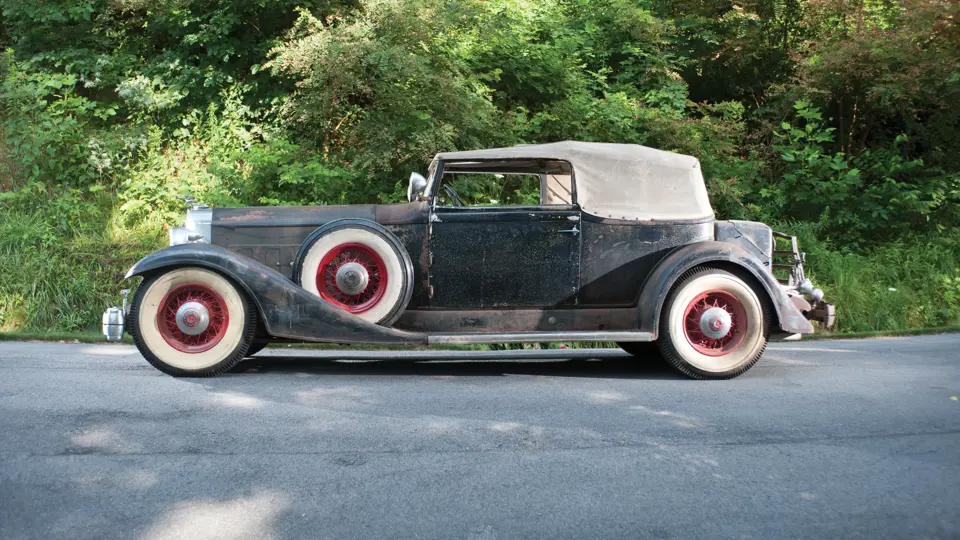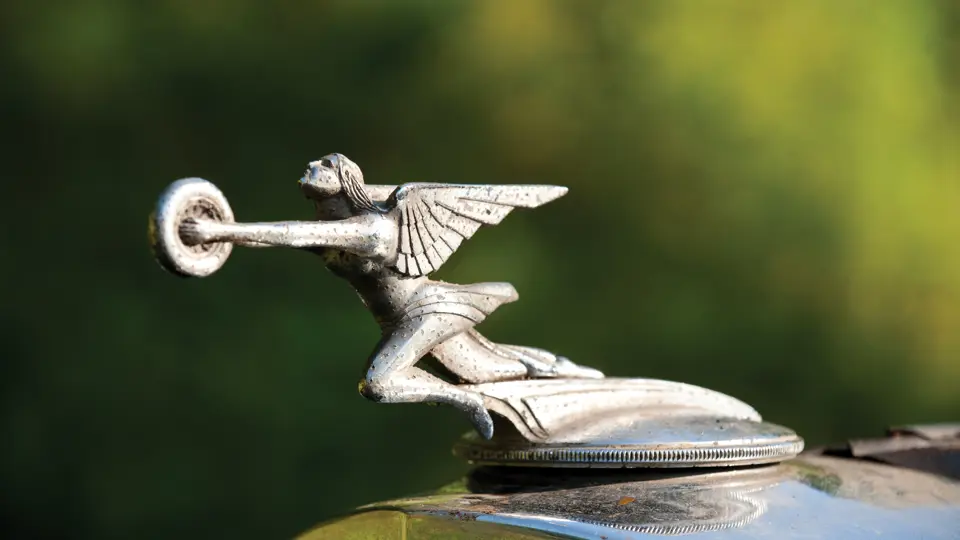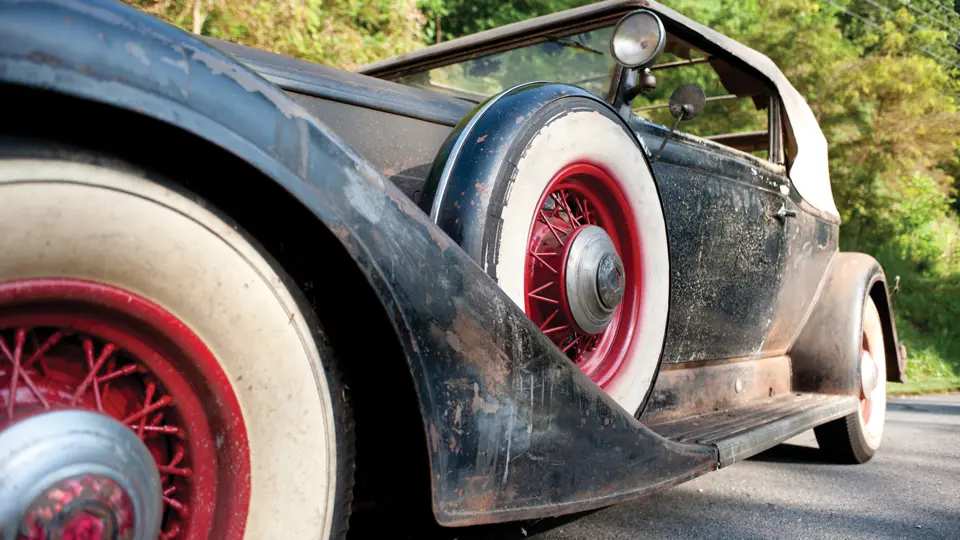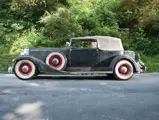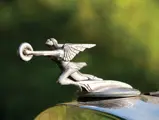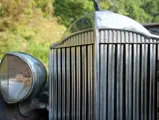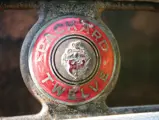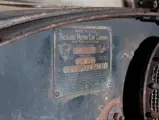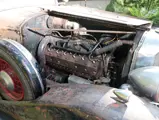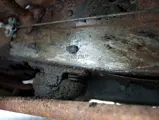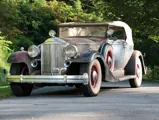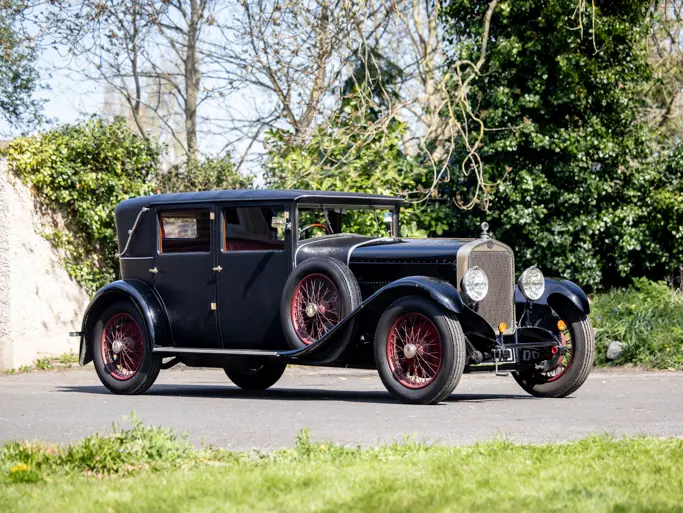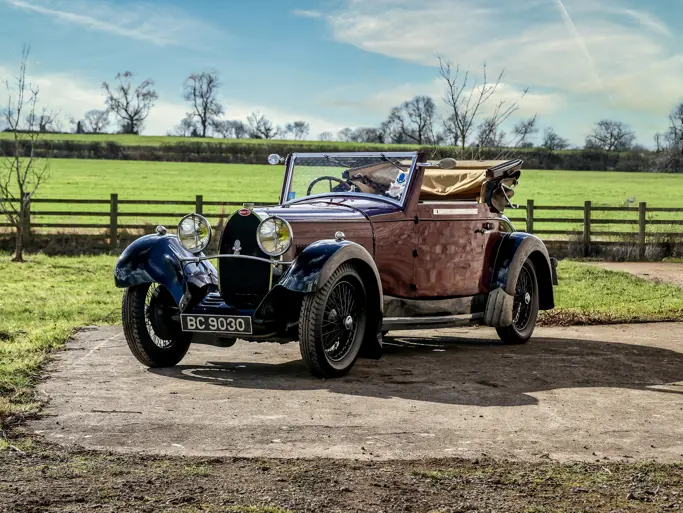Model 1005. 160 bhp, 445 cu. in. modified L-head V-12 engine, three-speed selective synchromesh manual transmission, solid front and rear axles with semi-elliptic leaf springs, and four-wheel mechanical drum brakes. Wheelbase: 142 in.
• An outstanding, unmolested, original example
• Three owners from new
Among Packard’s finest pre-war creations were the 10th Series Twelves. Offered here is an unmolested original example with very long-term, known history. Chassis 901136 is the second Convertible Victoria built for 1933. Its original test sticker from its breaking in at the legendary Packard Proving Grounds is still extant on the glove box and is dated February 1, 1933. According to the original firewall placard, it was shipped to the Zell Motor Car Company in Baltimore, Maryland, and was delivered on February 7, 1933.
Even with the comparatively inexpensive fuel prices of the period, the 5,440-pound Packard was not the most economical car to operate; initially, this would have been of little consequence to an owner who could afford its $4,988 price tag, but when gas rationing began at the onset of World War II, its consumption rendered it unusable. The car was sold on August 14, 1941 to a young Baltimore engineer named Bradford E. Blake Jr., who placed it in storage to await more fuel-rich times. Mr. Blake retained and maintained the car, driving it only very occasionally, from 1941 to 2012—an amazing 71 years. He passed away in early-2012, at age 91, making his Packard available to a new caretaker.
Before his passing, Mr. Blake asserted to the current owner that the car was originally ordered by Mrs. Margaret Emerson Vanderbilt as a 21st birthday gift for her son, Alfred G. Vanderbilt II, and that he had purchased it directly from the family. It is known that she had originally ordered for him a new Rolls-Royce, which he declined as he was not in favor of ostentatious displays of wealth. It is highly possible that the Packard was found to be a suitable substitute due to the marque’s reputation for quality luxury conveyances, which lacked the flamboyance associated with other prestige chassis.
Thanks to Mr. Blake’s thoughtful conservation, the car is complete and authentic down to the cigarette lighters and vintage cigarette butts in the ashtray. The wood remains sound, and significant portions of the original finish are still present on the solid, original sheet metal. As a further testament to its originality, this Packard still wears its brass Dietrich body number tag, which was affixed to all of the open factory-bodied Packards in the period and was often lost over time. The odometer shows less than 20,000 original miles, and due to Mr. Blake’s occasional use and maintenance, the car runs quietly and drives, shifts, and brakes smoothly.
Packard’s twelve-cylinder cars for 1933 were among their finest. With such features as adjustable power brakes, adjustable ride control, central lubrication, self-adjusting valves, and automatic choke, the Model 1005 Twelve chassis was powerful, technically advanced, and sophisticated. Mated with the lovely Convertible Victoria coachwork, this was quite a sporting vehicle for a young man at the highest levels of American society in 1933. As an unspoiled original, it possesses great potential to be preserved and used as a reference for other restorations, where it may be displayed in the preservation class at any of the world’s greatest concours or restored to award-winning perfection.
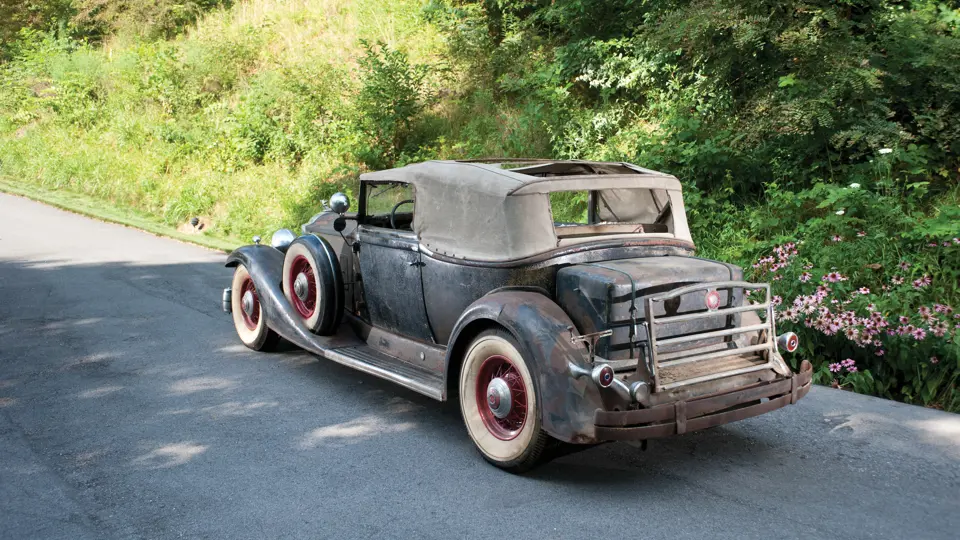

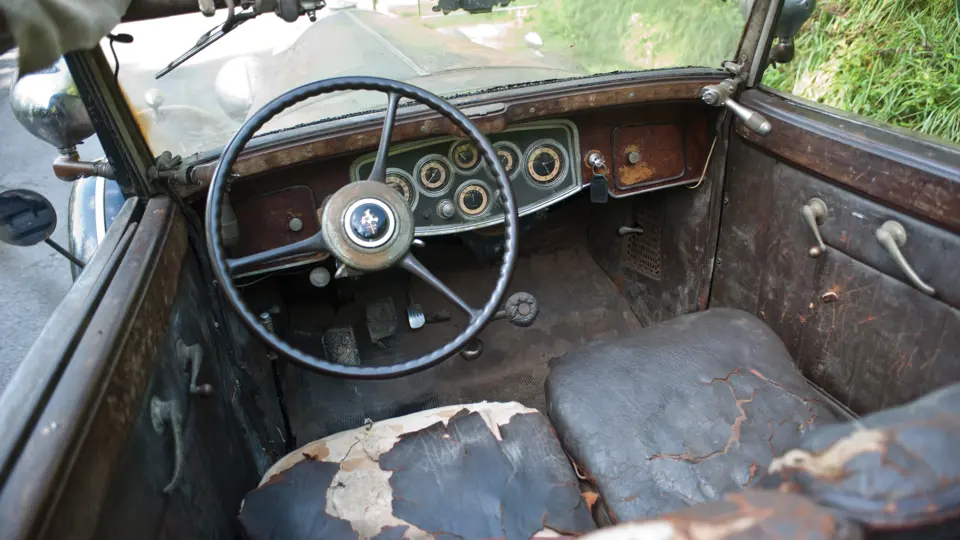

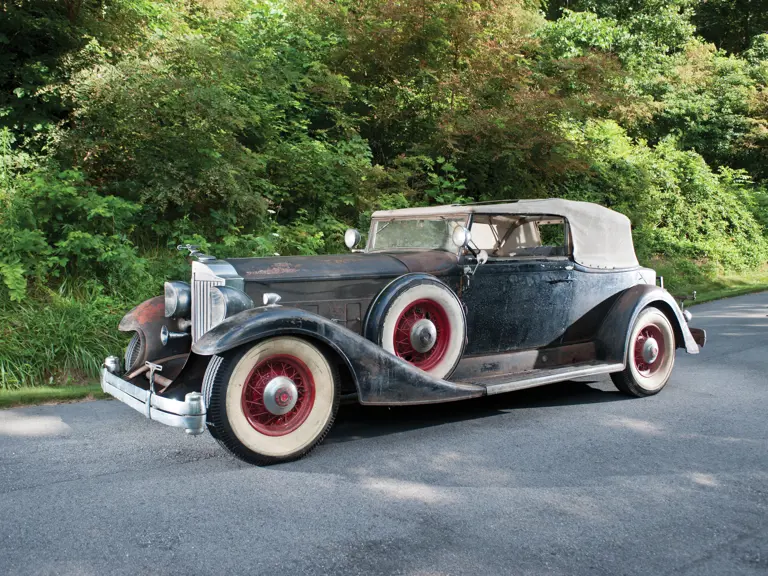

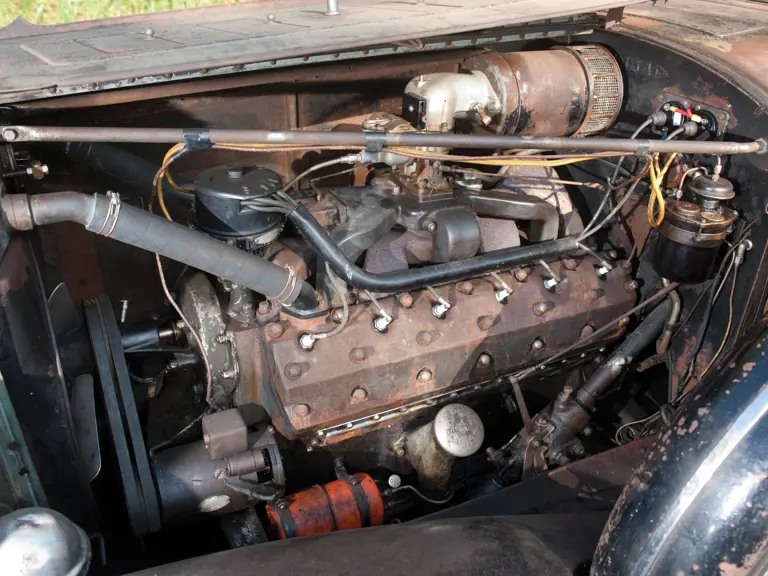
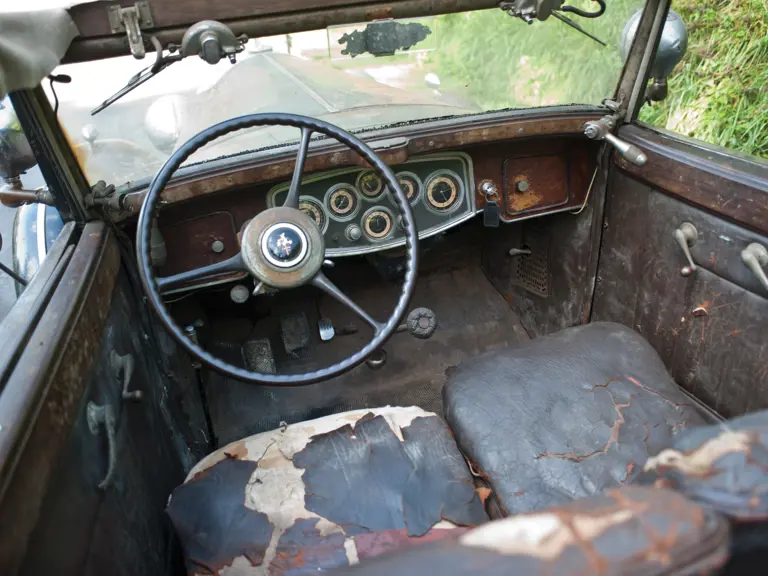
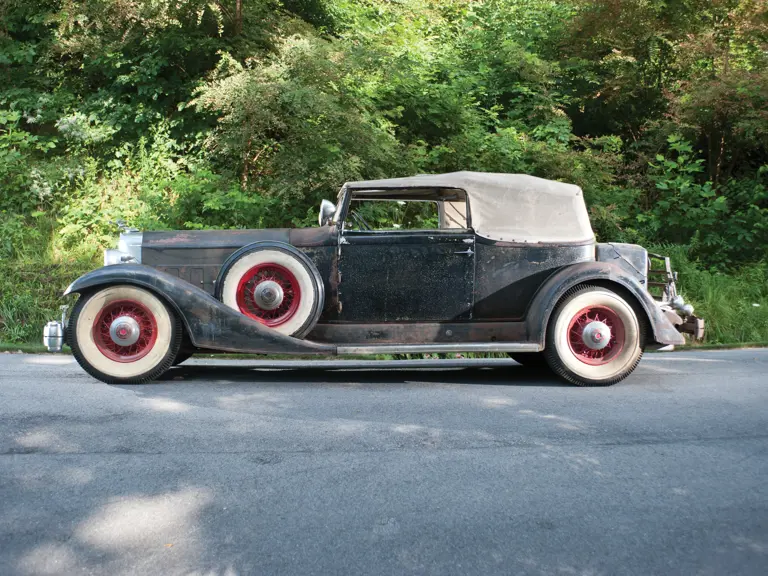
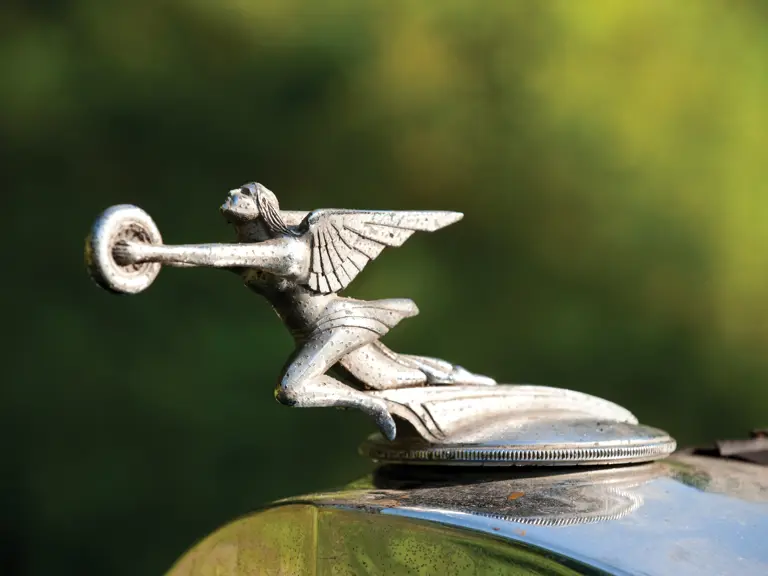
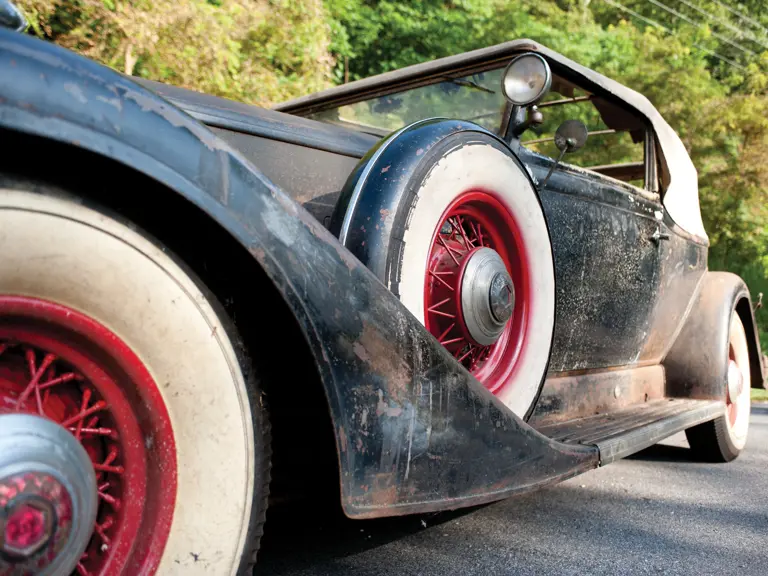


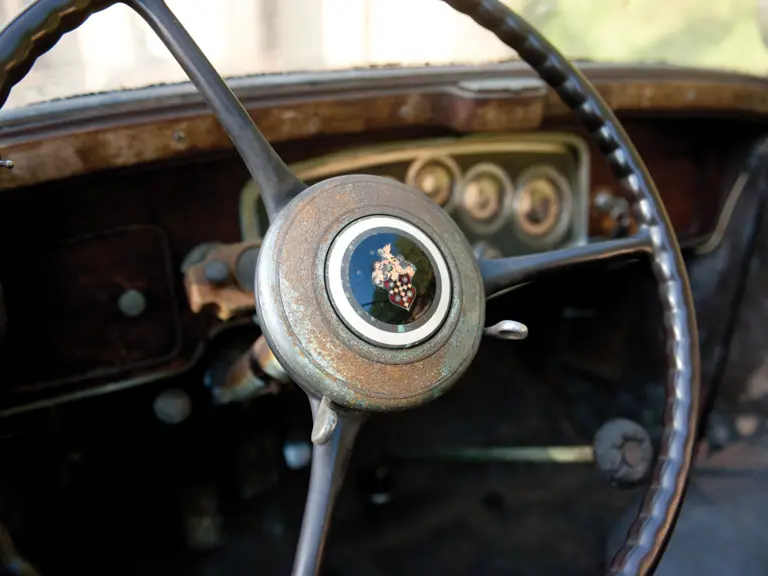
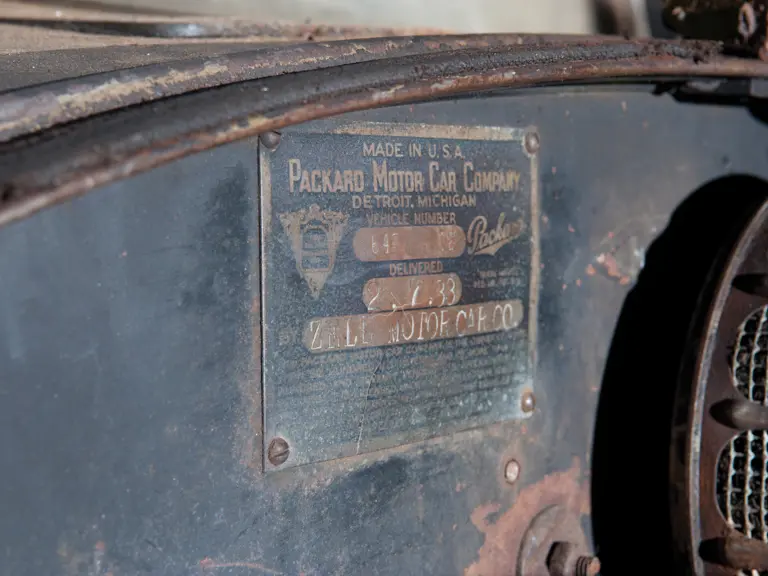



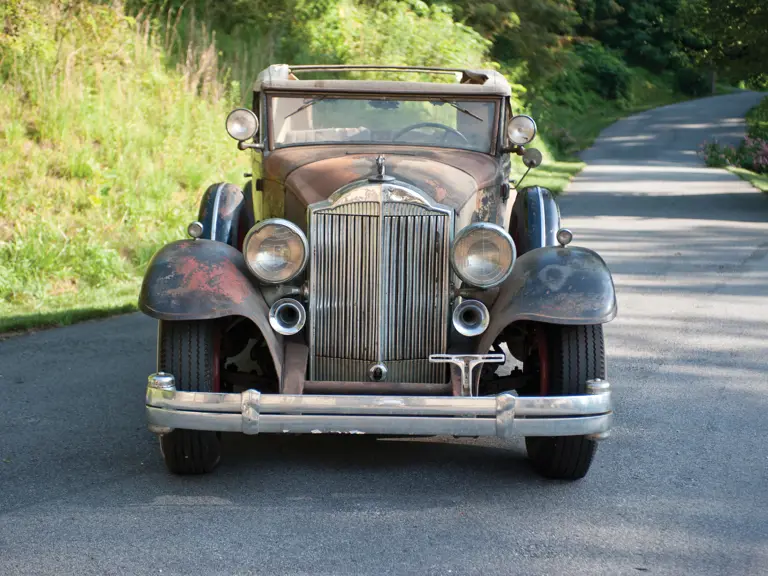
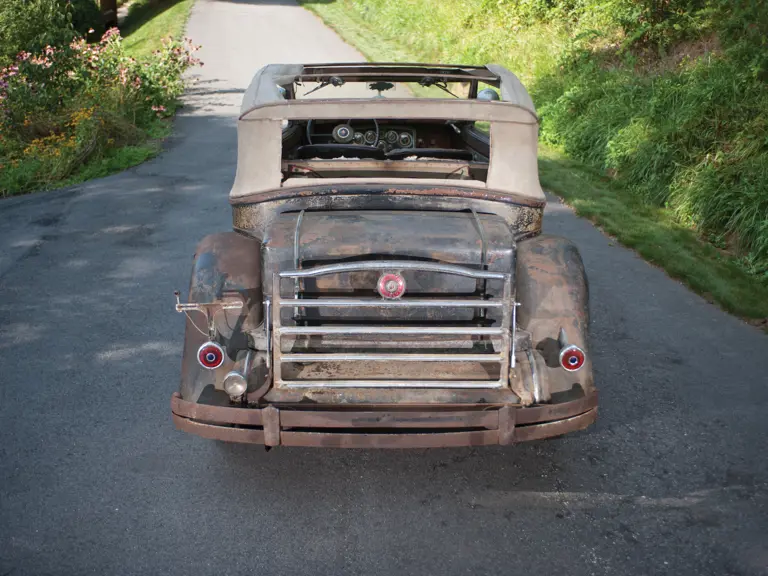
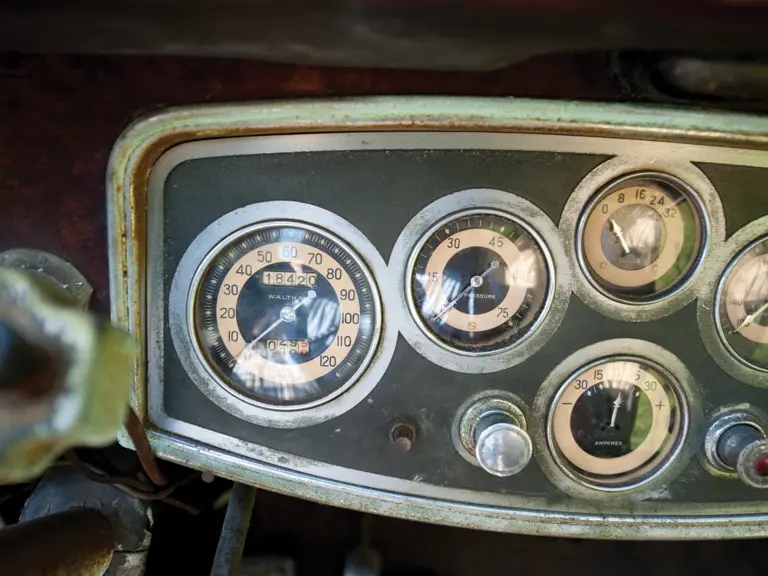
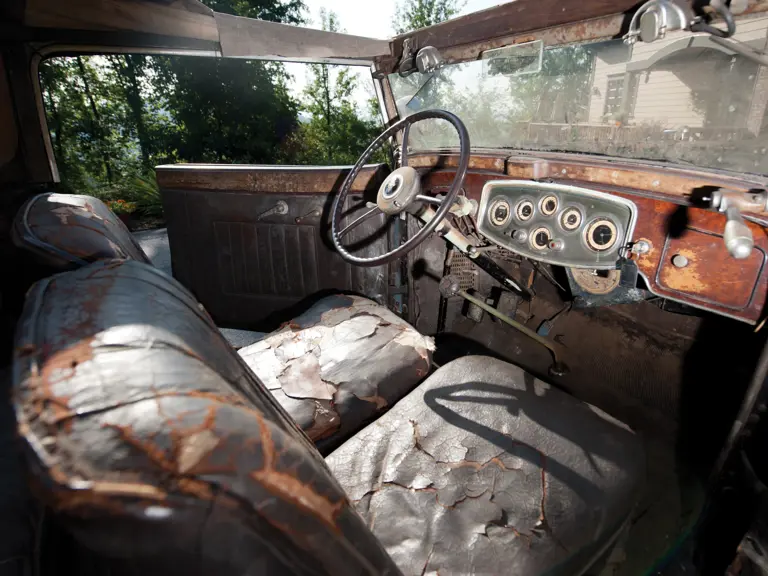
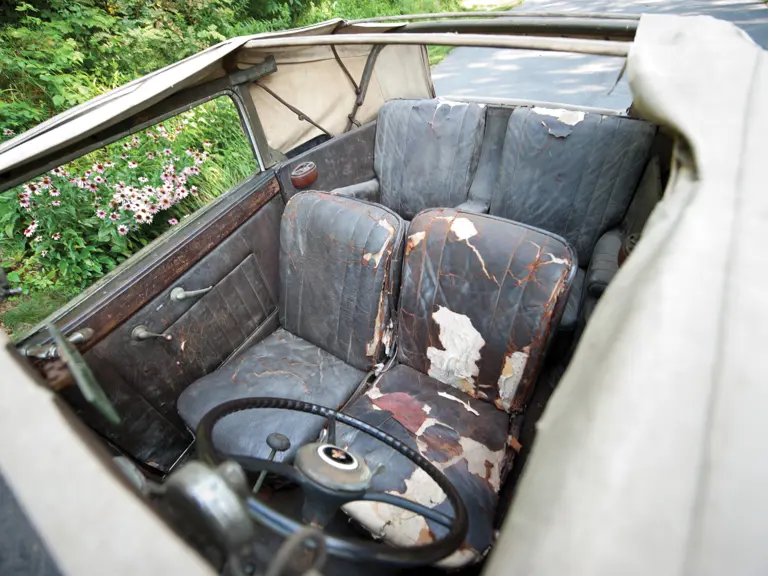
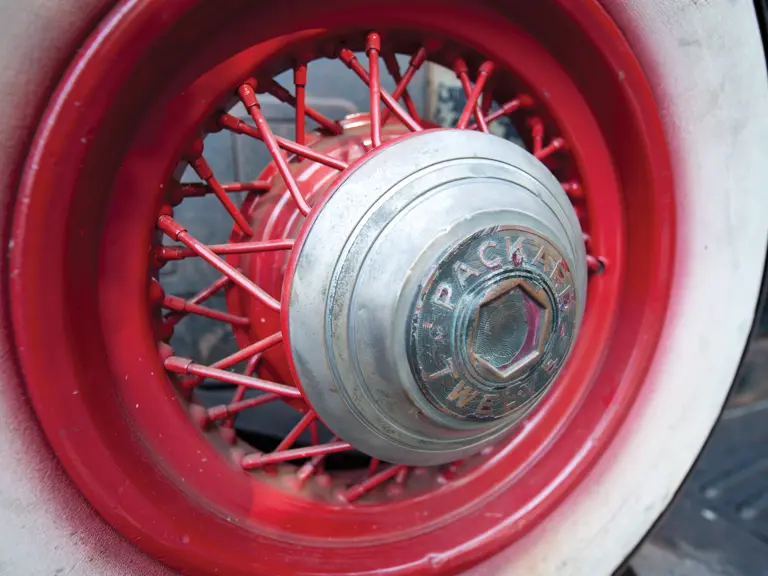

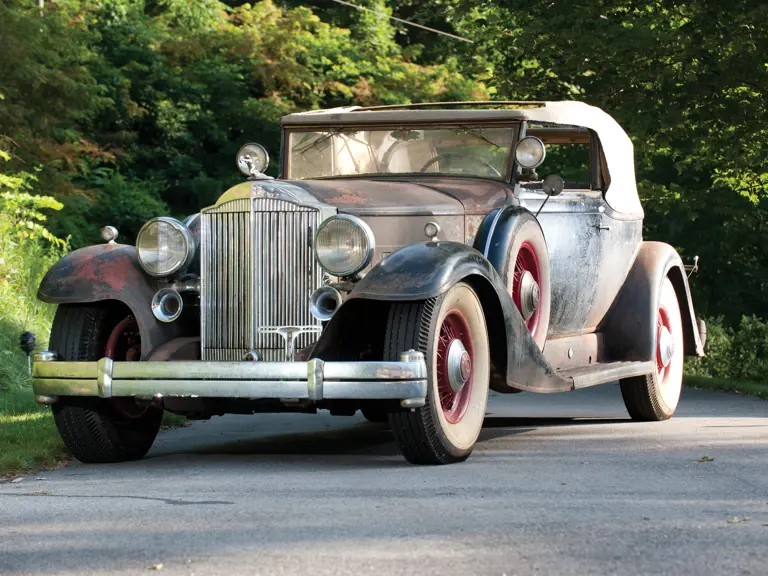
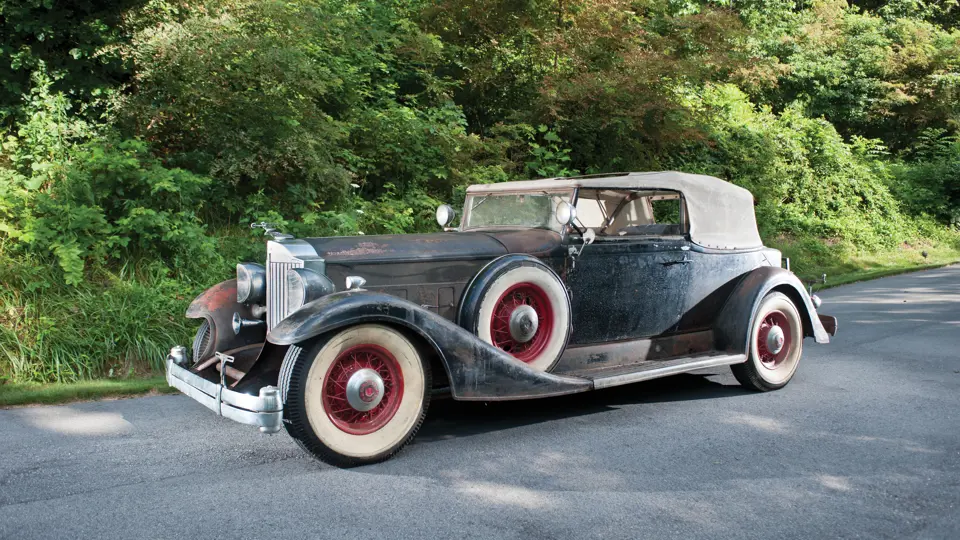
 | Hershey, Pennsylvania
| Hershey, Pennsylvania
